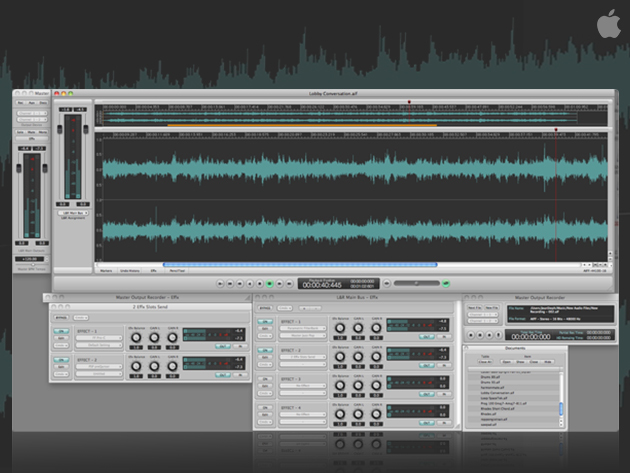
For example, if you have a mix that has a lot of unmusical subsonic movement around 25Hz, where the low end of the guitars is both preventing them from speaking out clearly and making the low end too diffuse, and where the bass or kick are a bit overwhelming, it's easy to see how you might want to high-pass filter that whole mix, but then have different low shelves for the Middle and Sides signals, or perhaps apply a shelf to the Sides and a bell cut to the Middle. But others could quickly find a place in the workflow. Some of the Mastering EQ's wilder possibilities would only be needed in real nightmare scenarios: for instance, except for problem cases in restoration projects, I have never yet had to EQ the left and right sides of a stereo mix differently. In terms of distortion, the worst use of a linear-phase EQ is as a sharp high-pass filter, as that is just where the smearing of pre-ringing is most pronounced - but one of its nicest uses is for gentle brightening, where a broad bell or shelf can bring out nice programme details without harshness, and the transient softening is actually welcomed.) (Why would you need both minimum-phase and linear-phase bands in the same EQ? Well, one reason is that the potential problem with linear-phase design - the pre-ringing and smear it introduces - has different audible consequences at different frequencies. Each can be minimum-phase or linear-phase, and each can process either the stereo signal or left, right, Middle or Sides channels separately. It features seven bands, each of which can be set to high- or low-pass, shelving or bell. The Sonoris Mastering EQ is extraordinarily flexible. Both are intended mainly for mastering and whole-mix EQ, and for this review that's how I used them. Both sound good, look good and have nice clean and open interfaces, but, as we will see, the Sonoris Mastering EQ attempts to up the ante over its competition with its tremendous clarity and flexibility, and the Parallel EQ does the same with its special sound. The two EQ plug-ins under review here have other ways of separating themselves from the herd. Different EQ plug-ins package this algorithm behind different user interfaces, and often add extra features, such as reproducing the non-linear aspects of certain famed analogue EQs.


Of course, this is a bit of an over-simplification, and even if it was theoretically true, there would still be practical reasons for different choices of software. There has been a fair amount of discussion on Web forums recently about the common origin of most digital EQs in a single 'bi-quad' algorithm, and hence of the possibility that, as it is put, "all digital EQs are the same”. Sonoris's innovative plug-in designs prove that not all digital equalisers sound the same.


 0 kommentar(er)
0 kommentar(er)
